Kumamoto
Kumamoto is a city of about 730,000 inhabitants, is the second largest in the Kyushu region and the capital of its prefecture.
Kumamoto city
Kumamoto has grown over the centuries around its
Castle, that today is not only the main attraction of the city, but also what has made it famous and a destination for tourists from all over the country.
Kumamoto Castle Park
Kumamoto Castle
(admission 500 yen, opening hours 8:30-18, until 17 nov-mar)
Considered one of the most beautiful castles in Japan, together with those of Matsumoto and
Himeji.
Founded in 1467 and enlarged in the following centuries, the castle was besieged in 1877 (
Satsuma Rebellion) and most of it, including the keep, was destroyed. Today's keep was rebuilt in 1960, and other buildings were rebuilt recently in order to restore the castle to its original version. Unlike other reconstructions, in Kumamoto everything was done trying to use original materials and techniques.
The main keep of the castle is surrounded by several smaller buildings and imposing walls, all within a large park with lots of cherry trees.
Among the many interesting things of this castle, I point out an underground passage that connects the main building of the castle with another place located nearby, the
Hosokawa Gyobu-tei.
Hosokawa Gyobu-tei
(admission 300 yen, opening hours 8:30-17:30, until 16:30 nov-mar)
The former residence of the powerful
Hosokawa Clan, one of the best examples in the country where you can see the old houses of the samurai of feudal Japan.
In 1873 the whole building had been moved from its original place, but it was put back in place, along with an accurate restoration started in 1990. To visit the interior of this residence you must first remove your shoes, after that you will follow a path going through the various rooms of the residence, where various mementos of the Hosokawa family are on display.
For those interested to visit both the castle and this residence, there is a combined ticket for the price of 640 yen.
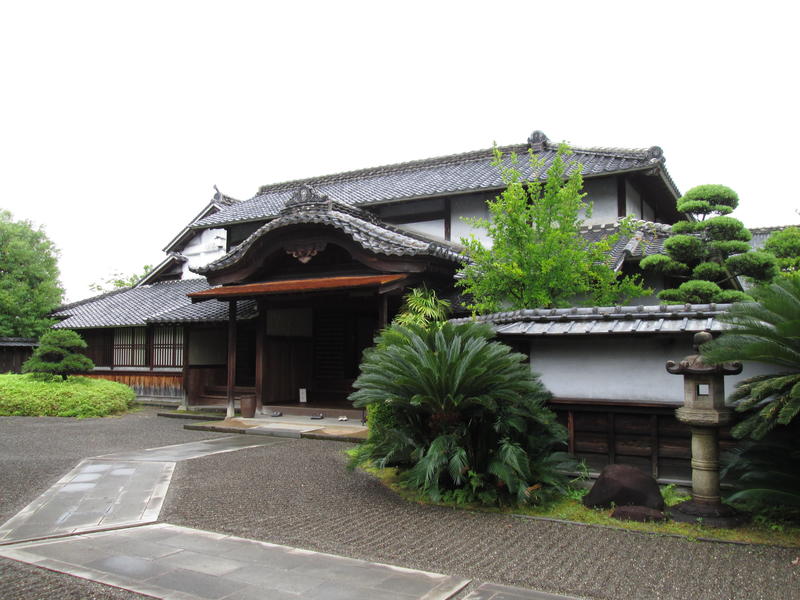 Hosokawa Gyobu-tei
Hosokawa Gyobu-tei
Kumamoto Prefectural Museum of Art
(admission 260 yen, opening hours 9:30-17:15, closed on mondays)
This museum is located about 500 meters east of the castle.
It houses a diverse collection divided into several sections. There is a section dedicated to modern Japanese art and a section dedicated to European and American art (there are works by Renoir, Rodin, Vlaminck, Pascin, Kisling, Rembrandt, Goya, others), a section dedicated to the funerary objects found inside thousands of
kofun (ancient burial mounds) unearthed in the region of Kyushu, a section dedicated to works of art and artifacts related to the city of Kumamoto. The museum also hosts temporary exhibitions.
Gokoku Shrine
A small Shinto shrine belonging to that group of shrines dedicated to the spirits of all those passed away because of the wars, it is located a few meters east of the museum described above, free admission.
Suizenji Garden
(admission 400 yen, opening hours 7:30-18, 8:30-17 nov-feb)
Traditional Japanese-style garden, the most important of Kumamoto and one of the most beautiful in the region of Kyushu. It is located approximately 3.5 km southeast of the town's castle, it can be reached by a long walk or by tram.
The garden, whose works began in 1632 but were completed 80 years later, was created by
Tadatoshi Hosokawa (there's a statue depicting him within the garden) and it represents the 53 post stations of the old route known as
Tokaido that connected Kyoto with the city of Edo (the old name of Tokyo). The main hill of the garden is also a representation of Mount Fuji, while the pond in the center of the garden represents the Lake Biwa.
Inside the garden there also a Shinto shrine (
Izumi Shrine), a stage for
Noh, and a teahouse (
Kokin Denju-no-ma).
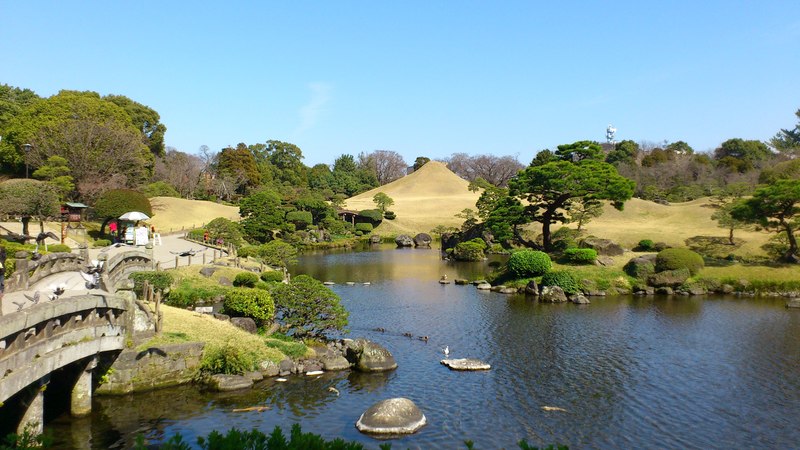 Suizenji Garden
Suizenji Garden
Hanaokayama Koen
This park is located just behind Kumamoto station, just look from any point around the station towards north-west and you will see it.
You can reach the top by climbing up a stairway for about 15-20 minutes. There is also a paved road going up to the summit, so you could get there from Kumamoto station by taxi too.
The main reason to get to this place is to enjoy a beautiful panoramic view of the city, especially at dusk or at night, when the place is frequented mainly by couples looking for romantic moments.
At the top there is also a small but very special Buddhist temple.
Hanaokayama Buddhist Temple
This temple belongs to a very particular sect, known as
Nipponzan-Myōhōji-Daisanga, and founded in 1917 by the japanese monk
Nichidatsu Fujii, who decided to spend the rest of his life to promote non-violence after a meeting with Mahatma Gandhi. Among the actions he took, there was also that to build the so-called "
Peace Pagodas" in every corner of the world.
The summit of Hanaokayama is a very special place because here is the first Peace Pagoda ever built. It was built in 1954 after 7 years of manual labor of the monks of the temple. Currently there are some 80 Peace Pagodas around the world.
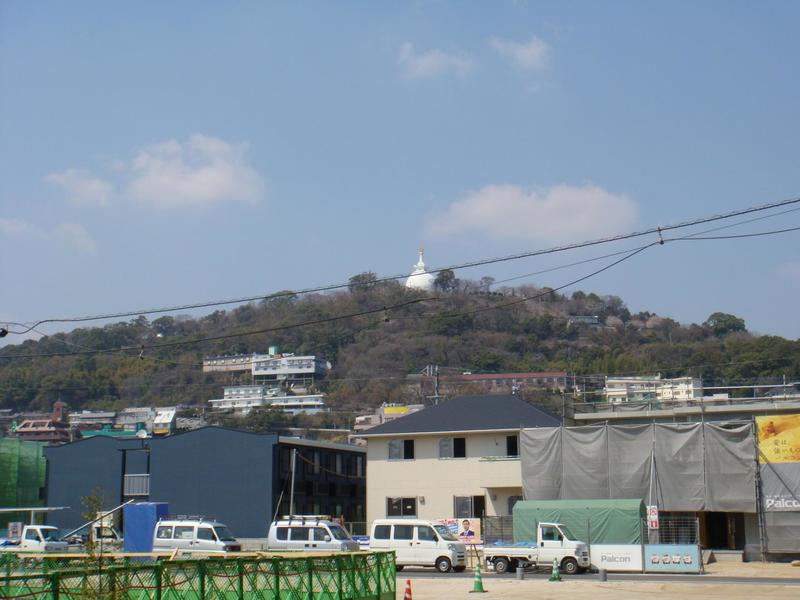
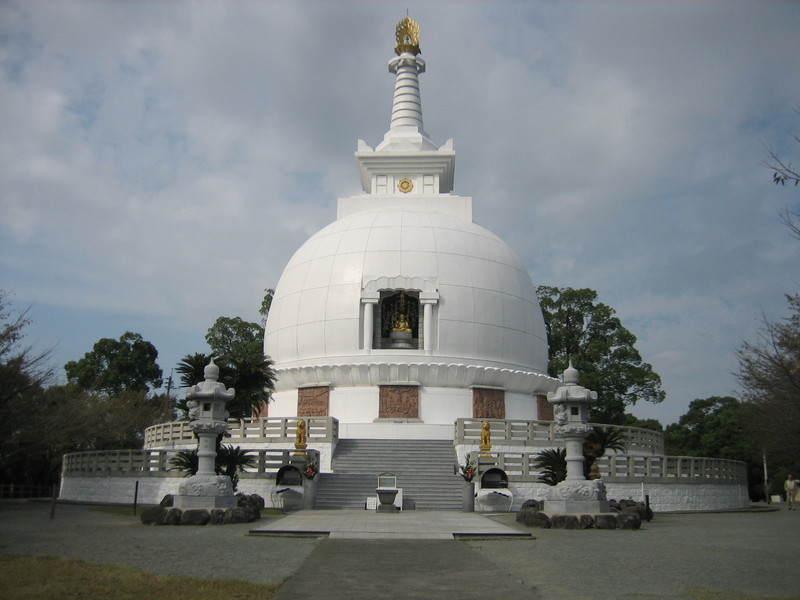 The peace pagoda on the top of Hanaokayama
The peace pagoda on the top of Hanaokayama
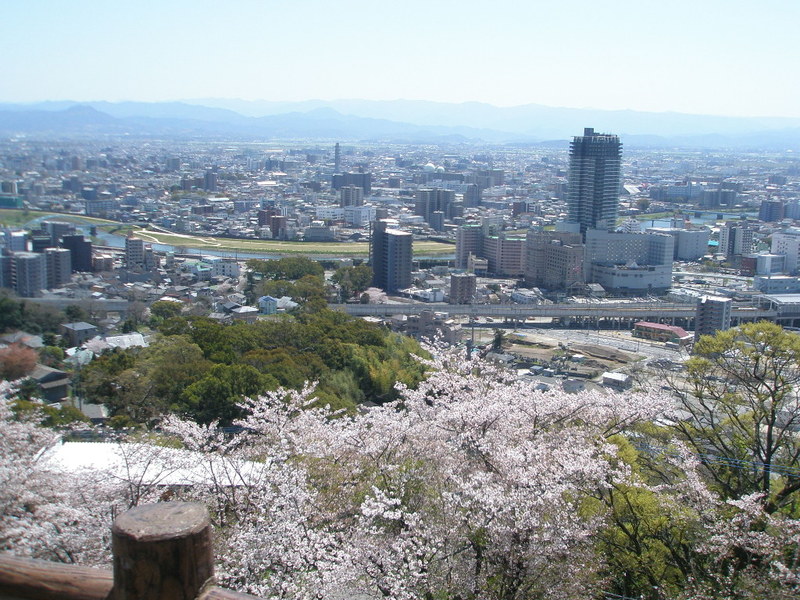 View of Kumamoto from Hanaokayama
View of Kumamoto from Hanaokayama
Lake Ezu
In southern Kumamoto there is a large body of water of about 50 hectares in size, known as
Lake Ezuand divided in two main areas connected by a kind of channel:
Kami-ezuko to the north and
Shimo-ezuko to the south.
The entire area around the lake is occupied by a large park, a sort of natural oasis in the middle of the city, perfect as a place to stroll and relax, to go fishing, take a ride on the typical small boats, or birdwatching. Around the lake a very rare bird may be observed, the
Japanese Tit. In the northern part the lake has a number of islands connected by bridges, on the banks of the southern part there is the
Suizenji Ezuko Park.
More or less in the middle of the lake, along the canal that links the southern area to the northern area, there are also a zoo and botanical gardens.
Kumamoto City Zoological Garden
(admission 300 yen, opening hours 9-17, closed on mondays)
Within this municipal park, which opened in 1929, there is a zoo with 124 different species of animals (especially 63 species of birds), the botanical gardens, and a small amusement park with some attractions aimed mainly to children.
There are two main entrances, one east and one west of the park. If you come from the central area of Kumamoto, the more convenient entrance is that to the east, about 700 meters far from the nearest tram stop.
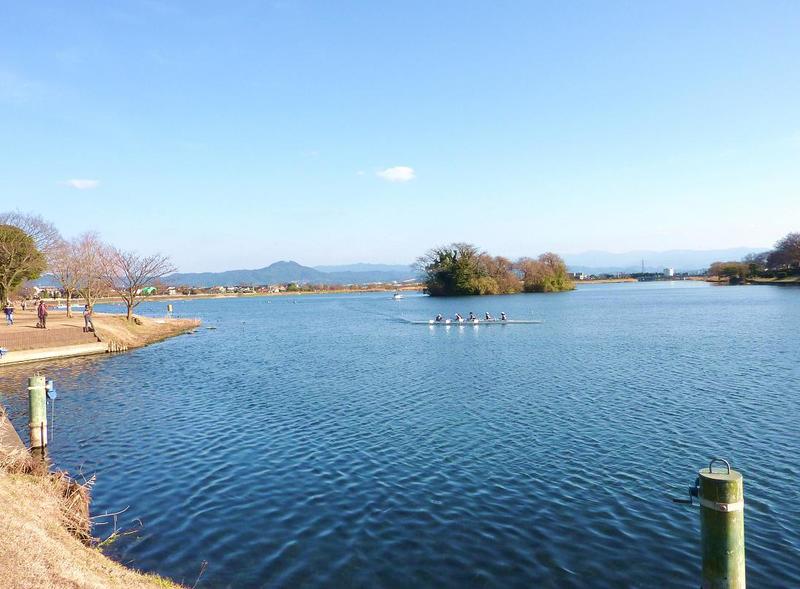 Lake Ezu
Lake Ezu
Where to stay in Kumamoto, recommended hotels
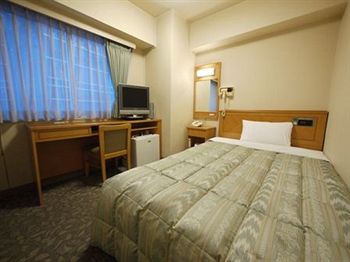 Hotel Route-Inn Kumamoto Ekimae
If you want to stay near Kumamoto station, located just 200 meters away, this hotel is highly recommended. For about 6,000 yen per night you can sleep in not very modern rooms but still clean and equipped with all basic amenities. You can also enjoy the public bath of the structure (sento) and the excellent buffet breakfast, always included in the price. Among the hotels near the station it is the cheapest one.
Hotel Route-Inn Kumamoto Ekimae
If you want to stay near Kumamoto station, located just 200 meters away, this hotel is highly recommended. For about 6,000 yen per night you can sleep in not very modern rooms but still clean and equipped with all basic amenities. You can also enjoy the public bath of the structure (sento) and the excellent buffet breakfast, always included in the price. Among the hotels near the station it is the cheapest one.
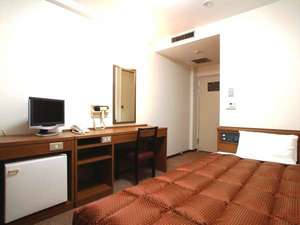 Kumamoto Green Hotel
A very good budget hotel in the center of the city, about 10 minutes away from the famous castle. Single rooms from 4,700 yen and double rooms from 5,700 yen per night that have nothing less than the rooms of other more expensive hotels nearby, small but clean and equipped with all basic amenities. A coffee machine is available for guests throughout the day.
Kumamoto Green Hotel
A very good budget hotel in the center of the city, about 10 minutes away from the famous castle. Single rooms from 4,700 yen and double rooms from 5,700 yen per night that have nothing less than the rooms of other more expensive hotels nearby, small but clean and equipped with all basic amenities. A coffee machine is available for guests throughout the day.
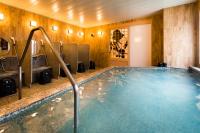 Super Hotel Lohas Kumamoto
This hotel is located more or less halfway between the station and Kumamoto Castle, both within a few minutes by tram. The rooms are rather small but modern and equipped with all basic amenities. One of the best things of the hotel is its spa, which includes an onsen with hot springs and a sauna. The breakfast buffet is highly recommended, just 500 yen a day. Single rooms from 7,500 yen, double rooms from 10,000 yen per night.
Super Hotel Lohas Kumamoto
This hotel is located more or less halfway between the station and Kumamoto Castle, both within a few minutes by tram. The rooms are rather small but modern and equipped with all basic amenities. One of the best things of the hotel is its spa, which includes an onsen with hot springs and a sauna. The breakfast buffet is highly recommended, just 500 yen a day. Single rooms from 7,500 yen, double rooms from 10,000 yen per night.
How to get to Kumamoto
By train
Shinkansen
Kumamoto station is an intermediate stop of the
Kyushu shinkansen, the high-speed train connecting Kagoshima (70 minutes, 7950 yen) and Fukuoka (39 minutes, 3330 yen).
Fukuoka (Hakata station) is itself the last stop of the
Sanyo shinkansen, therefore by changing in Fukuoka you can get to Kumamoto by shinkansen from many cities further north, such as Osaka (200 minutes) and Hiroshima (100 minutes).
From Tokyo the whole trip takes at least six hours, to be taken into account only if you have Japan Rail Pass.
Local trains
Normal trains in this part of Japan are not as fast as in other areas of the country, so, despite Kagoshima and Fukuoka are relatively close, 100 km far the first one, 170 km far the second one, the shinkansen is the best alternative if you do not want to waste much time.
Local trains to/from Kagoshima must be discarded, they take about 5 hours for a total of 4300 yen.
Local trains to/from Fukuoka (
JR Kagoshima line) may instead be taken into consideration if you want to save money, they take about two hours for a total of 2,130 yen.
By coach
Given the slowness of traditional railway lines and the high cost of the shinkansen, the low-cost mobility among major cities in Kyushu is carried out by buses.
This website (available in english) has been realized through a collaboration between all the major bus companies operating in the region, you can use it both to check the timetables and to book online.
By plane
Kumamoto airport (
KMJ) is well connected with major cities of the country. If you do not have the Japan Rail Pass, the plane is undoubtedly the best way to reach the city of Kagoshima from Tokyo, Nagoya or Osaka.
Airlines serving the airport for the domestic market:
Solaseed Air (low-cost)
Jetstar Japan (low-cost)
JAL Japan Airlines
ANA All Nippon Airways
Amakusa Airlines
Fuji Dream Airlines
Map of Kumamoto
Guided tours, activities and other things to do
If you are planning a trip to Japan and you want to do something more than just visiting famous places and monuments, we suggest you to use
Rakuten Travel Experiences.
How to use Rakuten Travel Experiences
Rakuten Travel is a very useful website to
enrich your travel experience, especially if you are going solo or it's your first time in Japan.
Because of the language barrier (and more), in Japan it is very difficult to interact with the locals and to get off the tourist track.
Thanks to Rakuten Travel you can find a lot of interesting and sometimes unique
guided tours and activities all over Japan (and not only in Japan), that you would otherwise never be able to enjoy.
But there's more: on Rakuten Travel you can also
buy tickets for several famous attractions, events, transportation and other useful services for tourists. Last but not least, you can
reserve a table in hundreds of restaurants.
Some examples
Take a look at Rakuten Travel Experiences
You may also be interested in
 Hotel Route-Inn Kumamoto Ekimae
Hotel Route-Inn Kumamoto Ekimae Kumamoto Green Hotel
Kumamoto Green Hotel Super Hotel Lohas Kumamoto
Super Hotel Lohas Kumamoto